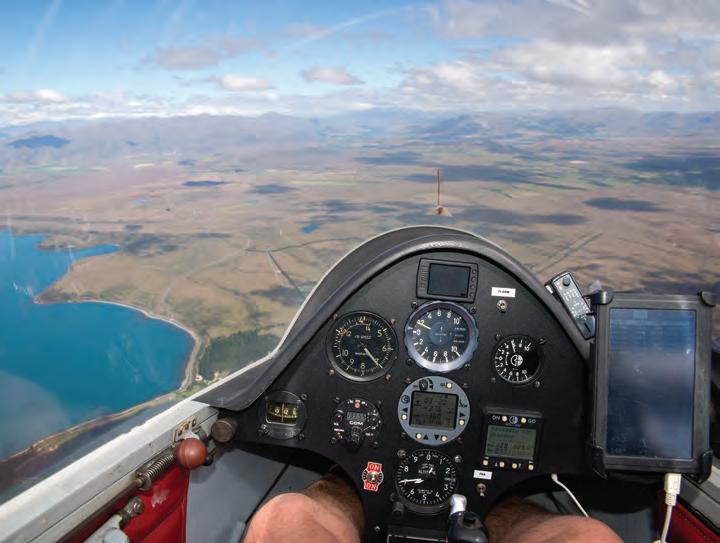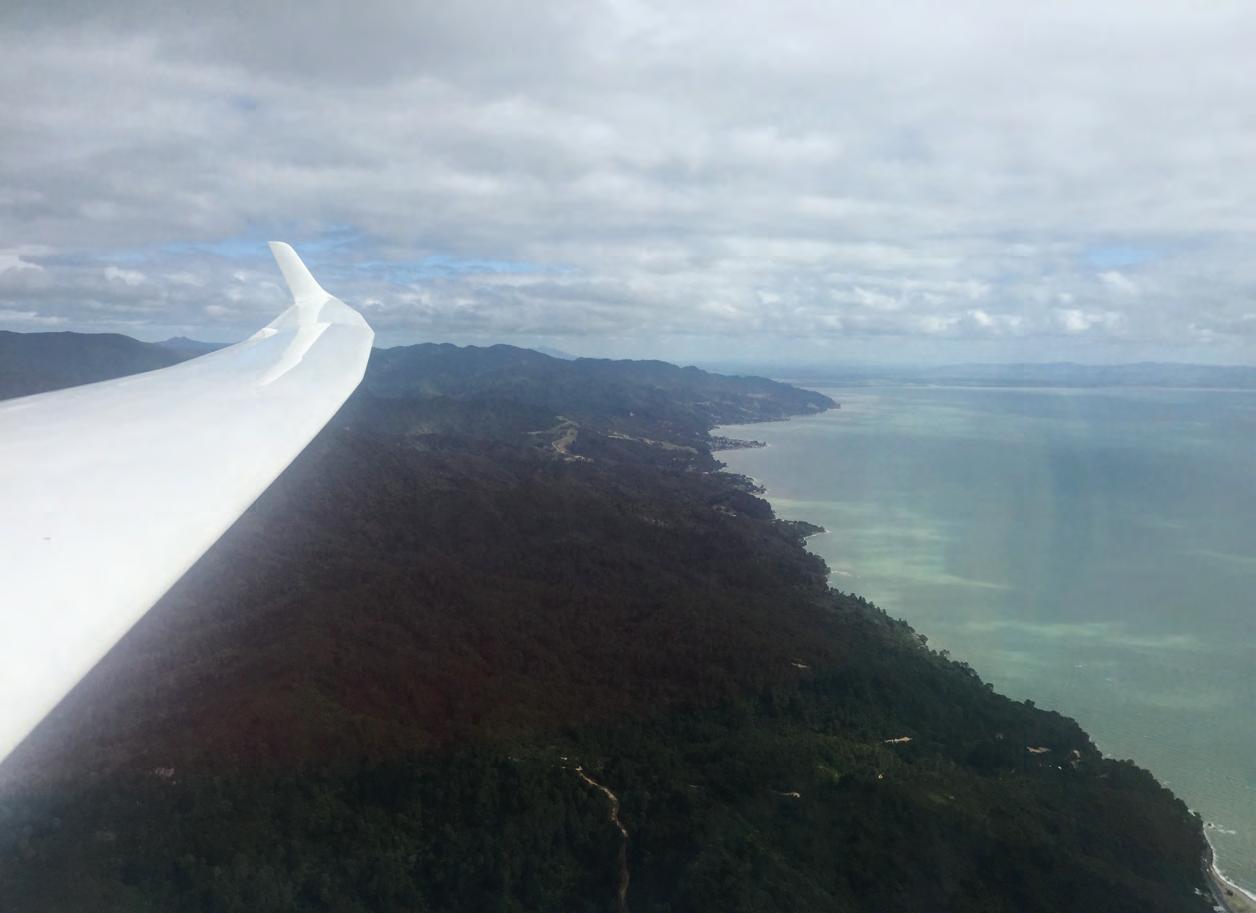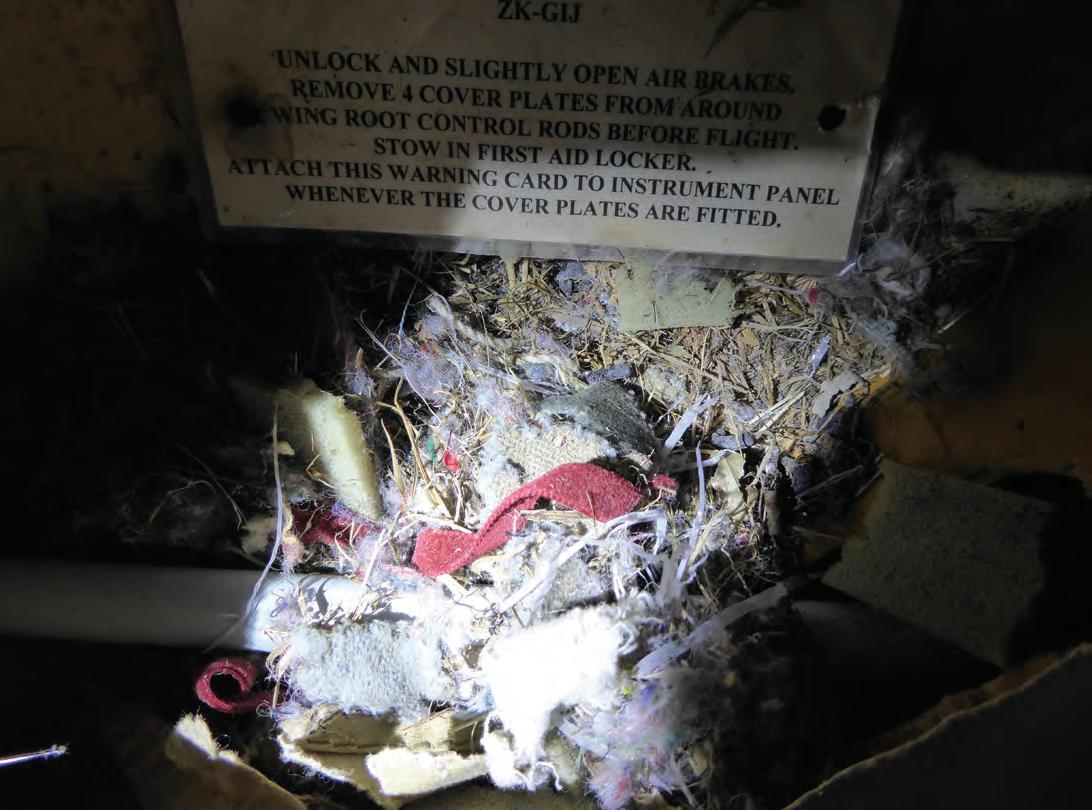6 minute read
From ‘das Wasserkuppe’ to the Waikato
from SoaringNZ Issue 48
by mccawmedia
Next Article
From ‘das Wasserkuppe’ TO THE WAIKATO The travels of Schleicher Ka-6BR ZK-GLX
BY JONATHON POTE
Sunday 11 December was a great day for the Coast, the anticipation of which had been building since the ‘high’ first appeared on the charts a week before. The Aviation Sports Clubs' ‘usual suspects’ were there. From around noon, five launched for the coast, Hawkeye in KP, Gary in MP, Tony in VF, myself in LX and Steve W plus Rudolf last as the whippers-in, flying MW.
It was the expected wild ride to the coast from Whenuapai, with both tow pilot Graham in RDW and myself being dragged along, wishing we were not there at times. Eventually we reached the coast – it seemed to take forever – and I cast off to run out over the gannets, pristine white dots below, and a very angry sea. My plan was a cautious one: stay high, proceed slowly and backtrack whenever more height was on offer. For much of the flight I was at 2000 feet whenever the airspace allowed, watching the others way below.
Off Muriwai things were not great, and at one point I was even contemplating a beach landing but after I struck south, things improved a lot and I could relax as I learnt which sections of cliff were producing ‘the elevator’ that day. The Manukau crossing still has a pucker factor although you know it will end happily, and that first lift on the far side is a very happy moment. The falling tide against the gale made it no place to go for a dip, even with a lifejacket.
The Awhitu section between the rivers is always pretty dependable and thus I relaxed. Auckland Gliding Club was operating a winch at their Douglas Road strip, I think for the first time. It was very nice to see one of their gliders ready for launch, straight into the lift.
With Kariotahi below, I turned back as per plan, again having a brief chat with the AGC crew, and headed for the Waitakere. The cliffs between the Manukau and Kare Kare are spectacular and I have walked the many paths frequently, so it was wonderful to beat back and forward along that stretch looking down at familiar spots. I did perhaps six cycles along that area before heading for Piha and the wartime radar site at which (just after the War) radio astronomy had its first faltering
successes, leading to today’s huge knowledge of the Universe.
Here I climbed into controlled airspace, returning to 134.5 to find that an RNZAF Boeing 757 was about to take off and conflict with me (don’t they know steam gives way to sail?). When the tower asked me to descend to 1500 feet to deconflict, I demurred as that thousand feet was my life insurance policy for the flight home. Ever helpful ATC allowed me to stay high provided I was north of Muriwai (but still in CAS – transponders are wonderful) and then cleared me for the home run once the 757 was clear. To the experienced competition pilot, ‘The Final Glide’ has a ring of impending success. To me it sounds more like an epitaph.
There was good instability, with some poorly formed cloud streets, so the sky marked the route home with ‘the angle’ improving all the way and I was able to pass west of Whenuapai to join downwind for 26 Grass with height to spare. Air Traffic informed me it was gusting over thirty knots and offered to give me the cross-wind component. I was quite tense enough to do without that!
The Schleicher Ka-6 “Rhönsegler” (The swallow – or sailor – of the Rhön Mountains, where it was built) marked a step forward in gliding design and performance. With the advent of the fifteen metre class soon after, with minimal redesign, the original Ka-6 could conform as the Ka-6BR (factory lengthened wings and replacement of the skid with a wheel, then recently developed in Mesopotamia and just out of patent) or Ka-6CR, entirely factory built from new. It won ‘The Worlds’ in 1960 and 1963, gained the first OSTIV award (google it to learn more) and the world distance record, nearly one thousand kilometres. Although its stay on the world podium was brief, just look at any gliding trophy; one wonders if the Ka-6 was the only type in use for decades.
ZK-GLX: In 1958 I was making my first model aircraft, which flew after a fashion. However, over in Germany more important construction was afoot: Rhönsegler Werke-nummer 388 was being built at Poppenhausen in the Rhön mountains by the Alexander Schleicher Segelflugzeubau and then registered as D-4055. Fortunately, many of the documents since then are still with the glider although with my limited German, reading them is a slow process. On June 12th, 1959, after work costing 1200 deutschmarks, probably its factory conversion, it was test flown again. A few years later it was back for repairs. The pilot has made a sketch map of the incident which indicates a very low 180 degree turn into wind on a land-out (possibly a ground loop landing downwind) ending in small trees.
Some 1972 documents seem to be the hand-written equivalent of today’s IGC files, and the launch site is at the Wasserkuppe. In the 1920s, the Wassekuppe was the cradle of gliding in the Rhön mountains, with significant military overtones as the Treaty of Versailles banned powered aircraft training in Germany. A smoothly rounded mountain, it allowed fairly easy access to the top (950 m) followed by a launch in any direction as dictated by the wind. It was here that the first known ridge soaring flights occurred in 1922, somewhat fancifully depicted [above], and Artur Martens, the pilot, formed
THE ELDERLY LADY WHO ACCOMPANIED ME FOR A DAY AT THE SEASIDE: A BRIEF HISTORY OF ZK-GLX
The actual final approach was almost vertically down with severe turbulence near ground level and a firm arrival. I could not leave the cockpit immediately as the wing thought it was still flying but The Team appeared, fitted the dolly and pushed me backwards into the relative calm by the fence. Only once Tony had picketed one wing did I climb out, promptly adding a nose picket. Both tore loose after a while (thanks for the prompt action, Lionel). Just over two and a half hours. What a flight! And very grateful thanks to those who stayed to watch over the mission.
Drawing, first ridge soaring flights at Wasserkuppe

the world’s first glider pilots’ school. A factory and a research establishment were added to the flugplatz which remains the Mecca of gliding.
In November 1979, w/n 388 was imported into New Zealand and D-4055 was replaced by ZK-GLX. By then it had flown just over 1750 hours, 870 since a major overhaul. It became based at Matamata just over twenty years ago, losing the tail in a 1999 land-out. Repaired and generally rebuilt, she soldiers on with some 4600 launches and 4000 hours so far. Truly a bit of gliding history, an icon, whose custodianship I must one day pass on.

A primary glider (SG38 Schulgleiter) at the Wasserkuppe










